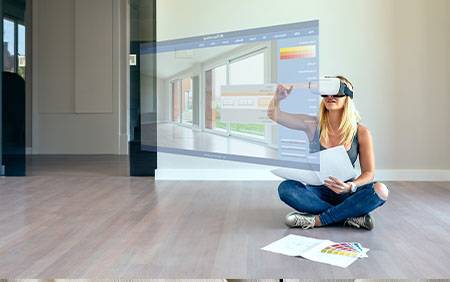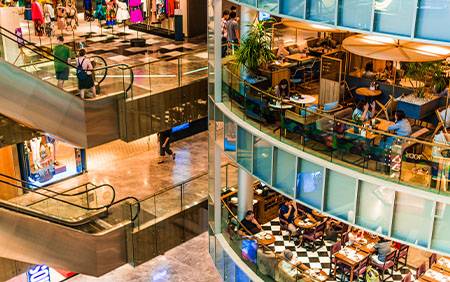Surprising Facts About How We Shop
- Impulsepop Writer

- Sep 30, 2020
- 6 min read
When we first wrote this blog back in 2018, we started it off with ‘we’re in a new era of retail.’ We were right then, but boy how things have changed since then! We are now well and truly in a new era of retail. Not just with the effect of Coronavirus still adapting and changing our everyday habits (and importantly how we shop… and how we’re allowed to shop) but also with the escalation of online technology. Even Argos have finally ditched their iconic catalogue system in favour of a more streamlined process provided by technology.
With each new development – from adapting to one-way systems and restrictions, revolutionary shop window displays, to innovative retail initiations – retailers have reimagined how they package and sell their products.
With this boom of change, we shoppers have had to adapt and learn new ways to shop. Developing new, and at times surprising, shopping habits. We have put together a list of some of the tactics that retailers use to take advantage of footfall throughout their stores and shopping centres as well as some consumer habits and trends and other shopping facts.
The UK does more online shopping than the rest of the world!
In the UK, we spend more per household shopping online than consumers in any other country! And it’s mainly because we love to entertain ourselves. Cinema, concert tickets, takeaway orders and music downloads topped the charts on our nation’s online spending. Since the lockdown caused by Coronavirus, three quarters of people in the UK are now doing at least some of their grocery shopping online.
We have been led to believe that Cyber Monday is the biggest online shopping day of the year, however that title actually goes to Singles Day, 11th November. In China, 11.11 represents lots of single people and they are encouraged to buy themselves gifts to celebrate. Last year Alibaba had a record breaking $12 billion worth of purchases in the first hour of Singles’ Day.
While we have been used to shopping online during lockdown, we are now being encouraged to shop more locally and support smaller, independent businesses. For some more encouragement, it might be worth considering the environmental impact of shopping online. Although it may seem that online shopping is more ‘green’, the transportation used to deliver goods straight to your door is something to be considered.

Smartphone Ecommerce Domination
Nearly half of e-commerce sales are now done through smartphones. John Lewis, in their 2017 shopper experience report, found that millennials were twice as likely to use their phones to research products while shopping – sifting through products online and comparing them to what’s physically ahead – and three times as likely to combine shopping with another leisure activity. Mobile shoppers make more impulse purchases. 77% of mobile shoppers make impulse purchases. And that’s not it! If they haven’t bought something straight away, 70% of them will come back within the first hour after seeing something that caught their eye, and will purchase it.
Unsurprisingly, mobile purchases are predicted to be worth $3.56 trillion by 2021, and continue an upward trend thereafter. From 2019 to 2020, the share of total E-Commerce spend grew 3.2%. Now that may not sound like a lot, but when you put it in context of financial growth, it’s a jump from $2.32 Trillion to $2.91 Trillion.

Social media is the new go-to for customer service
We’re reliant on customer service through social media more than ever. And each swift response and good experience has led to more trust towards our favourite retailers. Almost 3 in 4 consumers interacted with a retailer via social media and 40% have spent more as a result.

We want to start renting products, even clothes!
One in five people in the UK, and one in three within London, are interested in renting from their favourite stores. This trend is particularly strong among millennials as they are most used to renting.
Renting clothes is becoming more popular, the main consumer age being between 25-34yr olds (46%), that’s nearly half of the population!
Exercise equipment topped the list of what people wanted to rent (19%). Shoppers who showed an interest in renting would be willing to spend £200 or more per month on unlimited clothing rent subscriptions.
Virtual Reality (VR) & Augmented Reality (AR) here we come!
Most noteworthy, we still prefer the high-street experience to shopping online. We want to see in-store digital features that bridge traditional stores with their online counterparts.
Westfield’s latest survey found that:
41% of people in the UK would like to use virtual reality to experience how products will look in their home
33% of people agreed they are interested in using virtual assistants to see how clothes would look on them.
Three of John Lewis’ department stores have been trialling ‘Visualise Your Space’, where customers can input their room dimensions onto an iPad and see what various products would look like together. They also found a 50% increase of app downloads in the first week after their Virtual Lipstick Experience was launched.

Shopping centre design encourages spontaneous purchases
Shopping centres are purposely designed to be disorientating, to encourage shoppers to spontaneously visit more stores and spend longer in them. There are rarely clocks on display or windows for shoppers to be able to keep track of time. Escalators in large shopping centres are positioned so that customers need to walk past as many shops as possible. For the same reason, major department stores, such as John Lewis and Debbenhams, are placed at the opposite ends of the mall from each other. This sort of design encourages shoppers to fall victim to the ‘Gruen Transfer, the transition between purposeful shopping to aimless wandering, hoping that something will catch your eye. The idea of creating an efficient space where all shopping could be done in one place and making them enjoyable public gathering spaces, with gardens and benches, was developed by architect Victor Gruen. Despite him actually hating the idea of an inefficient shopping experience, retailers saw the opportunity of using eye-catching window displays and confusing (or well laid out, depending whose opinion you take) floorplans to bombard consumers with a multitude of goods that you didn’t know you needed until you saw it and, much to his chagrin, named this experience after Gruen.
They’re all strategies that well-planned stores use to peel people way from a specific desire for an object, and steer them toward a generalized desire to shop.
Still, for retailers, this shows the importance of product placement and creating enticing displays.
Other shopping centre design and layout facts we found interesting are:
Soft furnishings and carpet are used to make customers feel more at home.
The click of heels on a hard, polished floor attracts women and inspires them to shop and spend more money.
Fragrances and cosmetics are placed at the entrance of department stores to set the mood on your way into the store.
Food courts are located at either the top or in the basement of shopping centres to avoid unpleasant smells entering the shops.

How the habits of shoppers can affect how much money they spend
We all like to think that we do not fall subject to subliminal advertising and clever merchandising, but the evidence is there, that promotional displays, end-caps and merchandise near the tills attract spontaneous purchases. Uzma Khan has spent her career studying consumer behaviour. She and her research colleagues coined the term “licensing effect”, where shoppers give themselves permission to purchase non-essential items as a reward after they have completed buying everything off their shopping list. A study by Brigham Young University, however, found that you could make more balanced decisions on your high-cost purchases by wearing high heels. For those shoppers that are not so comfortable with balancing in high heels in a busy shop, perhaps try standing on one leg. This also worked for online shopping, with consumers asked to balance on their chair legs while weighing up purchases.
How can retailers take advantage of footfall in their stores?
With the lower footfall in stores at the moment, it’s even more important to take advantage of every opportunity. For ideas on how you could upgrade your promotional displays, see our past display projects. Below are also some great examples of how we’ve helped clients increase their revenue via cleverly designed displays. Have an idea for something new? Get in touch to discuss your bespoke retail display stand.










Comments